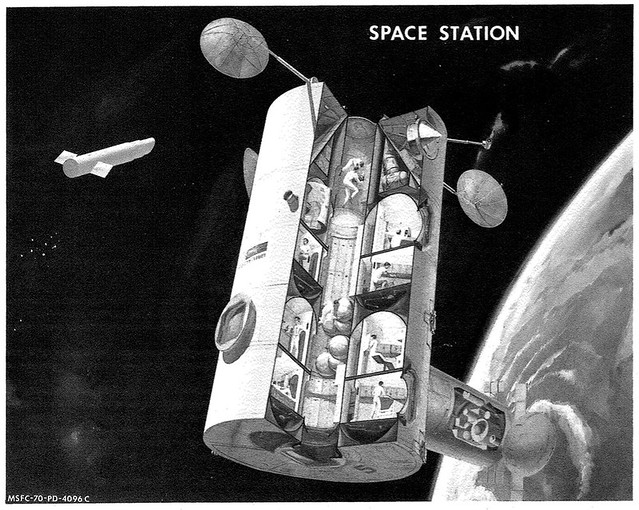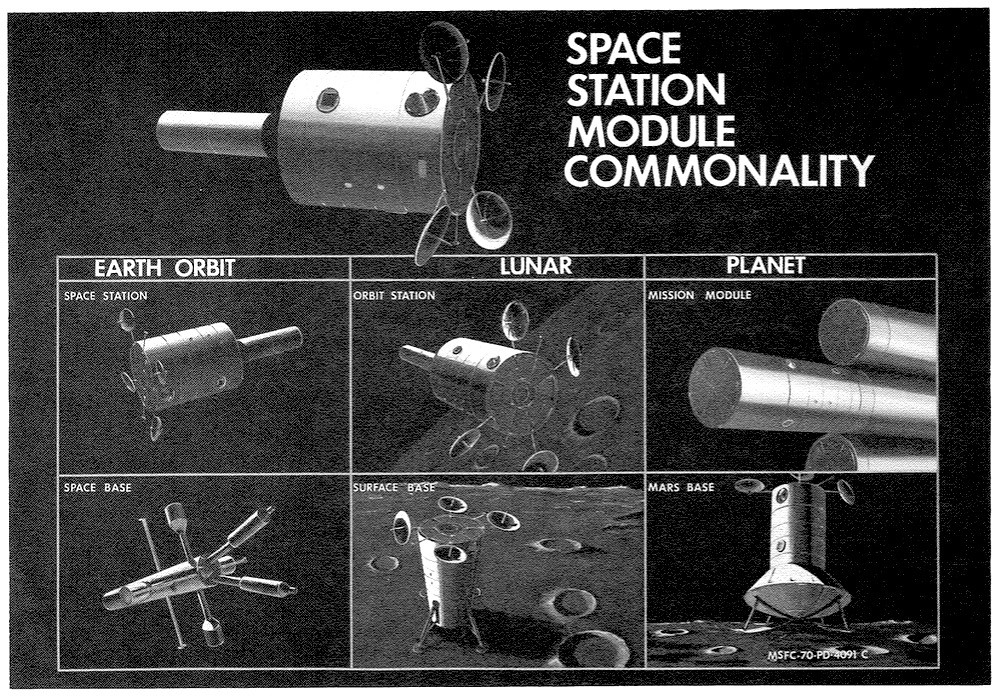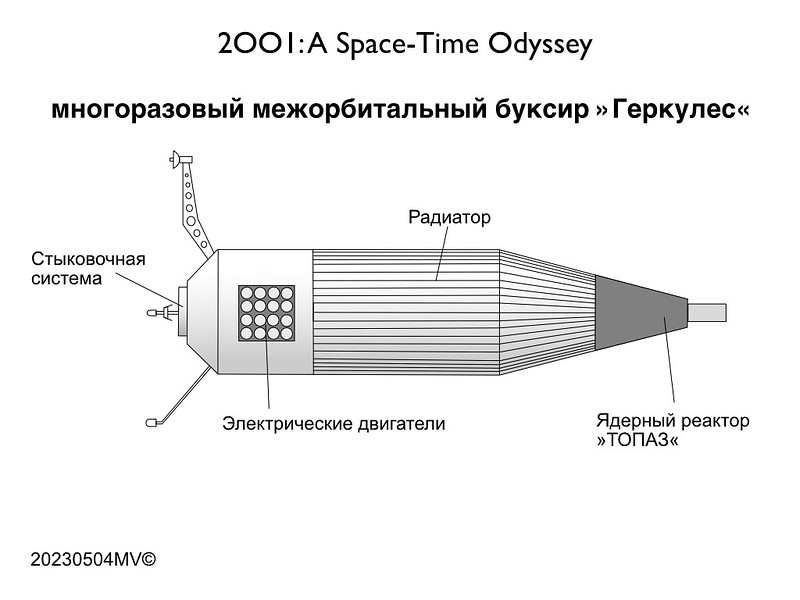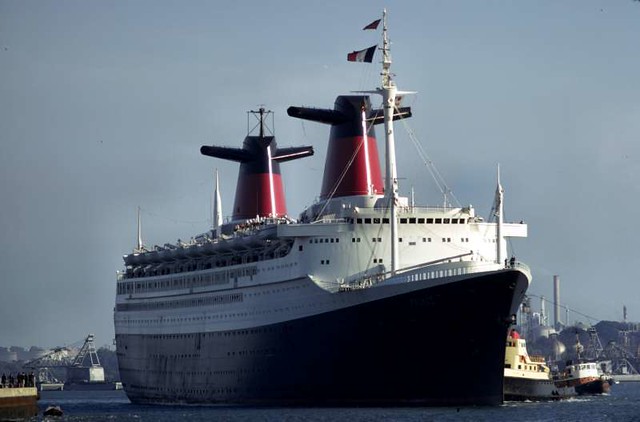Post by michelvan on Apr 6, 2022 17:36:32 GMT
39 -Development of NASA's Space Station III

In early 1970 the space station III planning process went into Phase B where diverse companies entered detailed proposals.
The two options offered where either a modular station launched by Shuttle or a unitary space module launch by Saturn V,
NASA favor to Unitary station as building block for future Odyssey architecture.
The Saturn-V launched space station module would could be adapted to function as surface base modules for the Moon and Mars,
as interplanetary crew modules for expeditions to Mars and Venus,
or free flying stations in lunar or geosynchronous orbit and finally as the station modules for a large LEO Space Base.
McDonnell-Douglas won the contract with their unitary station proposal, But Boeing and Rockwell entered complaints,
Arguing that McDonnell-Douglas had already gotten the Skylab contract and that this was evidence of corruption.
NASA made clear that their competing concepts were not good. Rockwell's "Spirit of "76“ proposal had a single pressure vessel with an "inter Volume airlock“,
In emergencies the crew could be dispersed all over station which would make rescue difficult.
Boeing had sent six proposal, from a modified 1968 Mission module for there Mars Mission to several configurations of their 1967 Orbital Workshop design.
McDonnell-Douglas' Unitary Module offered 3 pressurized compartments, one as central tunnel that offered a save haven for the crew and also as a place for 6 additional astronauts on short mission.
This was a substantial advantage over Rockwell's "Spirit of 76" proposal as NASA had already decided against developing any kind of lifeboat for immediate return to Earth.
Also playing a decisive role in McDonnell-Douglas getting the contract was the fact that Boeing and Rockwell were already responsible for building the Saturn V (as well as adapting it into a down-scaled variant necessary for the Odyssey program) and developing the Earth to Orbit Shuttle. NASA's administration considered this a sufficiently heavy load for Rockwell and Boeing.
Further, McDonnell-Douglas had significant space station experience thanks to the USAF's abortive MOL program and NASA's successful Apollo Skylab Program.
However during Phase C of the design process, the concept McDonnell-Douglas had envisioned had to be radical adapted.
NASA had naively believed that Unitary module would had empty mass of 90,000 lb. (40823 kg).
During Reevaluation of the Phase C Mock-up, it became clear that the Unitary module would be far heavier, twice to three times
Also were complaints made by Astronauts after they tested the mock-up of station (currently on display today at the Smithsonian in Washington D.C),
The West Germans demanded a series of science racks to be installed, which lead to re-designs in the Laboratory parts of the Station.
So William Snaith Co-designer of Skylab 1 and 5, had do his best job to adapt the 1969 design toward a more functional one.
Thankfully several developments in technology and materials during 1970s helped to reduce the mass of the Station.
One was the development of smaller and better electronics, the other was new materials like composites and Alu-titanium alloys for use on the hull and structure of the module.
Another new innovation for the station was an experimental life-support system built around the Sabatier reaction.
However despite significant technical alterations to the initial design, the final mass of Station still higher as original planned.
Initially two Space Station Modules (SSMs) were manufactured, the primary module (A) and the secondary module (B).
The secondary module served a dual purpose. In the event of a launch failure with the primary module,
The secondary module would serve as a backup. In the event all went according to plan the secondary module would be launched into a polar lunar orbit via a reusable nuclear shuttle and become the permanently staffed 6-man Lunar Orbit Space Station
(LOSS, also known as "Moonlab). Meanwhile the primary module would form the core of an expanded multi-module LEO Space Base.
These free-floating space stations would then serve as the building block for interplanetary mission modules designed to house crews visiting Mars and Venus as well as surface modules for bases on the Moon and Mars
In 1979 Space Station III was finally ready to launch and it got also received its name. From the 16 proposals submitted President Glenn chose "Skybase". After being placed into it’s 456 km orbit at 55°, 50 km from Spacelab-5,
The old Station was modified to serve as Safe-haven for the crew in case of emergency, and to safely deorbit itself when the time came. Following these preparations,Space Shuttle brought Skybase's first 12 men crew. under command of Jack Lousma.
In a historic moment in the history of spaceflight, artificial gravity was generated for the second time [1].
For the first 30 days of the station's operational career an artificial gravity experiment was conducted whereby the Space Station Module was rotated via a cable attached to the spent S-IIB stage used to place the station in orbit.
As they rotated around the center of mass between the Stage and Station,
Several levels of artificial gravity ranging from 0.2gee to 0.7gee were generated.
During those 30 days, Isotope Brayton power systems in the S-IIB provided an 8.5 kWe power supply to the Station

Upon the end of this test, an Earth-to-Orbit Shuttle brought a solar power module to Skybase before the S-IIB was placed into a controlled deorbit for disposal in the pacific ocean.
With it's full 25 kWe power system fully operational, Skybase was now ready for the installment of it's Application and Science Modules (ASM)
A series of Shuttles flights brought them to Skybase, three were docked onto the Station;
an Earth Survey module, a Manned Centrifuge module, and a Fluid Physics module.
Two other ASM modules were stationed as free fliers, remaining within striking distance to Spacelab while guarded by a Space Tug,
if needed they could be brought to the Station and docked (for maintenance, repair or upgrade).
One was ESRO's Mikro Gravitation experiment module while another was the Advance Stellar Astronomy module.
However this was only the beginning. At the conclusion of an ASM's scientific mission, an Earth to Orbit Shuttle could deliver a new ASM to orbit from it's payload bay and then return the old ASM to Earth.
To a large extent, the science performed on these missions was a side show. In effect, Scientists were piggybacking on the orbital infrastructure being built up to support the planned Moon base, potential interplanetary missions and military applications.
The Advanced Stellar Astronomy module was directly based off the NRO's 4-meter diameter surveillance satellites.
With the exception of fundamental scientific question related to human adaptation in space, the political concerns about the Soviet space station & lunar base programs took precedent.
However this was accepted within NASA in exchange for continued high-funding levels which generally benefited both the science and non-science portions of the agency.
It had been accepted for quite some time that NASA was not the NSF[2]. It's goals were primarily geopolitical and had been since the formation of the agency in the wake of the Sputnik crisis.
These strictly terrestrial concerns were of no thought for the astronauts of course, who busily occupied themselves with the multi-billion dollar experiments the politicians funded as an afterthought.
One substantial benefit NASA found to having larger crews was that the duty roster on board now allowed for 24/24 hour operation.
As six crew members slept the other six worked in Laboratories and conducted scientific experiments. In the morning/evening (depending on which schedule the astronaut followed) the entire crew would in meet in station's Ward Room & Control Center.
Another notable difference between the new Skybase program was the lack of any immediate opportunity for return to Earth.
Without an earth return capsule, in the event of an emergency NASA would have to launch another Earth to Orbit Shuttle for rescue.
For this purpose the Crew & Cargo Logistics Module (CCLM) was endowed with it's own independent life support system to serve as a backup should an emergency on the Station arise.
In case of severe emergencies, the CCLM would actually be removed from the Station by a Space Tug and docked with Spacelab, until a Shuttle could be launched to bring it back. Thankfully,
This capability was never needed (although a fire in 1989 did necessitate the crew to briefly occupy the CCLM).
Or the case after French astronaut visit the Station the crew went in CCLM and vented the station air out to remove garlic odour.

After 90 days in space the Skybase 1's crew flew home with the Space Shuttle that brought the Skybase-2 crew and it’s resupply module.
For two years mission durations were limited to 90 days. In 1981, missions duration was then extended to 180 days after new Life-support system had proven it self and
As more Earth to Orbit Shuttle missions were designated for propellant resupply for cislunar traffic and other missions beyond LEO.
This proud early history of the United State's Starbase ended in 1990, after a total of 80 Earth to Orbit Shuttle missions and 24 extended duration missions (the longest of which lasted in excess of two years).
Over that time, additional ASM' were added, older ASM' were brought down to Earth, the crew size was expanded and other in space activities began to overshadow the once cutting edge station.
A 1989 fire which swept through the laboratory module in a failed experiment convinced those who had hoped to extend the station's operational lifetime further to accept the inevitable.
The Station was vacated and deorbited into the Pacific with the aid of Space Tugs. An obsolete (unmanned) Earth Survey Platform was also brought down with the station.
As a replacement came bigger bigger USAF Space Station IV in GEO and NASA's Space Station V, which took up the old base' 28° orbit [3].
The backup of Skybase had been put back into storage at the Kennedy Space Center following the successful launch of the primary Skybase module.
It then underwent modification for it's intended role as a Lunar orbital space station in 1981,
but that’s another story for another time.
Footnotes
[1] the First artificial gravity experiment was made during Gemini 11 in 1966,
were they connect Gemini with Agena stage with Cable and rotate. they were able to generate a small amount of artificial gravity, about 0.00015 gee,
by firing their side thrusters to slowly rotate the combined craft like a slow-motion pair of bolas.
[2] The National Science Foundation. It's a civilian agency devoted purely to scientific research, that has about 1/10th the funding level as NASA.
[3] "The old base orbit" is nickname at NASA because most Space station proposals use this 28° orbit.

In early 1970 the space station III planning process went into Phase B where diverse companies entered detailed proposals.
The two options offered where either a modular station launched by Shuttle or a unitary space module launch by Saturn V,
NASA favor to Unitary station as building block for future Odyssey architecture.
The Saturn-V launched space station module would could be adapted to function as surface base modules for the Moon and Mars,
as interplanetary crew modules for expeditions to Mars and Venus,
or free flying stations in lunar or geosynchronous orbit and finally as the station modules for a large LEO Space Base.
McDonnell-Douglas won the contract with their unitary station proposal, But Boeing and Rockwell entered complaints,
Arguing that McDonnell-Douglas had already gotten the Skylab contract and that this was evidence of corruption.
NASA made clear that their competing concepts were not good. Rockwell's "Spirit of "76“ proposal had a single pressure vessel with an "inter Volume airlock“,
In emergencies the crew could be dispersed all over station which would make rescue difficult.
Boeing had sent six proposal, from a modified 1968 Mission module for there Mars Mission to several configurations of their 1967 Orbital Workshop design.
McDonnell-Douglas' Unitary Module offered 3 pressurized compartments, one as central tunnel that offered a save haven for the crew and also as a place for 6 additional astronauts on short mission.
This was a substantial advantage over Rockwell's "Spirit of 76" proposal as NASA had already decided against developing any kind of lifeboat for immediate return to Earth.
Also playing a decisive role in McDonnell-Douglas getting the contract was the fact that Boeing and Rockwell were already responsible for building the Saturn V (as well as adapting it into a down-scaled variant necessary for the Odyssey program) and developing the Earth to Orbit Shuttle. NASA's administration considered this a sufficiently heavy load for Rockwell and Boeing.
Further, McDonnell-Douglas had significant space station experience thanks to the USAF's abortive MOL program and NASA's successful Apollo Skylab Program.
However during Phase C of the design process, the concept McDonnell-Douglas had envisioned had to be radical adapted.
NASA had naively believed that Unitary module would had empty mass of 90,000 lb. (40823 kg).
During Reevaluation of the Phase C Mock-up, it became clear that the Unitary module would be far heavier, twice to three times
Also were complaints made by Astronauts after they tested the mock-up of station (currently on display today at the Smithsonian in Washington D.C),
The West Germans demanded a series of science racks to be installed, which lead to re-designs in the Laboratory parts of the Station.
So William Snaith Co-designer of Skylab 1 and 5, had do his best job to adapt the 1969 design toward a more functional one.
Thankfully several developments in technology and materials during 1970s helped to reduce the mass of the Station.
One was the development of smaller and better electronics, the other was new materials like composites and Alu-titanium alloys for use on the hull and structure of the module.
Another new innovation for the station was an experimental life-support system built around the Sabatier reaction.
However despite significant technical alterations to the initial design, the final mass of Station still higher as original planned.
Initially two Space Station Modules (SSMs) were manufactured, the primary module (A) and the secondary module (B).
The secondary module served a dual purpose. In the event of a launch failure with the primary module,
The secondary module would serve as a backup. In the event all went according to plan the secondary module would be launched into a polar lunar orbit via a reusable nuclear shuttle and become the permanently staffed 6-man Lunar Orbit Space Station
(LOSS, also known as "Moonlab). Meanwhile the primary module would form the core of an expanded multi-module LEO Space Base.
These free-floating space stations would then serve as the building block for interplanetary mission modules designed to house crews visiting Mars and Venus as well as surface modules for bases on the Moon and Mars
In 1979 Space Station III was finally ready to launch and it got also received its name. From the 16 proposals submitted President Glenn chose "Skybase". After being placed into it’s 456 km orbit at 55°, 50 km from Spacelab-5,
The old Station was modified to serve as Safe-haven for the crew in case of emergency, and to safely deorbit itself when the time came. Following these preparations,Space Shuttle brought Skybase's first 12 men crew. under command of Jack Lousma.
In a historic moment in the history of spaceflight, artificial gravity was generated for the second time [1].
For the first 30 days of the station's operational career an artificial gravity experiment was conducted whereby the Space Station Module was rotated via a cable attached to the spent S-IIB stage used to place the station in orbit.
As they rotated around the center of mass between the Stage and Station,
Several levels of artificial gravity ranging from 0.2gee to 0.7gee were generated.
During those 30 days, Isotope Brayton power systems in the S-IIB provided an 8.5 kWe power supply to the Station

Upon the end of this test, an Earth-to-Orbit Shuttle brought a solar power module to Skybase before the S-IIB was placed into a controlled deorbit for disposal in the pacific ocean.
With it's full 25 kWe power system fully operational, Skybase was now ready for the installment of it's Application and Science Modules (ASM)
A series of Shuttles flights brought them to Skybase, three were docked onto the Station;
an Earth Survey module, a Manned Centrifuge module, and a Fluid Physics module.
Two other ASM modules were stationed as free fliers, remaining within striking distance to Spacelab while guarded by a Space Tug,
if needed they could be brought to the Station and docked (for maintenance, repair or upgrade).
One was ESRO's Mikro Gravitation experiment module while another was the Advance Stellar Astronomy module.
However this was only the beginning. At the conclusion of an ASM's scientific mission, an Earth to Orbit Shuttle could deliver a new ASM to orbit from it's payload bay and then return the old ASM to Earth.
To a large extent, the science performed on these missions was a side show. In effect, Scientists were piggybacking on the orbital infrastructure being built up to support the planned Moon base, potential interplanetary missions and military applications.
The Advanced Stellar Astronomy module was directly based off the NRO's 4-meter diameter surveillance satellites.
With the exception of fundamental scientific question related to human adaptation in space, the political concerns about the Soviet space station & lunar base programs took precedent.
However this was accepted within NASA in exchange for continued high-funding levels which generally benefited both the science and non-science portions of the agency.
It had been accepted for quite some time that NASA was not the NSF[2]. It's goals were primarily geopolitical and had been since the formation of the agency in the wake of the Sputnik crisis.
These strictly terrestrial concerns were of no thought for the astronauts of course, who busily occupied themselves with the multi-billion dollar experiments the politicians funded as an afterthought.
One substantial benefit NASA found to having larger crews was that the duty roster on board now allowed for 24/24 hour operation.
As six crew members slept the other six worked in Laboratories and conducted scientific experiments. In the morning/evening (depending on which schedule the astronaut followed) the entire crew would in meet in station's Ward Room & Control Center.
Another notable difference between the new Skybase program was the lack of any immediate opportunity for return to Earth.
Without an earth return capsule, in the event of an emergency NASA would have to launch another Earth to Orbit Shuttle for rescue.
For this purpose the Crew & Cargo Logistics Module (CCLM) was endowed with it's own independent life support system to serve as a backup should an emergency on the Station arise.
In case of severe emergencies, the CCLM would actually be removed from the Station by a Space Tug and docked with Spacelab, until a Shuttle could be launched to bring it back. Thankfully,
This capability was never needed (although a fire in 1989 did necessitate the crew to briefly occupy the CCLM).
Or the case after French astronaut visit the Station the crew went in CCLM and vented the station air out to remove garlic odour.

After 90 days in space the Skybase 1's crew flew home with the Space Shuttle that brought the Skybase-2 crew and it’s resupply module.
For two years mission durations were limited to 90 days. In 1981, missions duration was then extended to 180 days after new Life-support system had proven it self and
As more Earth to Orbit Shuttle missions were designated for propellant resupply for cislunar traffic and other missions beyond LEO.
This proud early history of the United State's Starbase ended in 1990, after a total of 80 Earth to Orbit Shuttle missions and 24 extended duration missions (the longest of which lasted in excess of two years).
Over that time, additional ASM' were added, older ASM' were brought down to Earth, the crew size was expanded and other in space activities began to overshadow the once cutting edge station.
A 1989 fire which swept through the laboratory module in a failed experiment convinced those who had hoped to extend the station's operational lifetime further to accept the inevitable.
The Station was vacated and deorbited into the Pacific with the aid of Space Tugs. An obsolete (unmanned) Earth Survey Platform was also brought down with the station.
As a replacement came bigger bigger USAF Space Station IV in GEO and NASA's Space Station V, which took up the old base' 28° orbit [3].
The backup of Skybase had been put back into storage at the Kennedy Space Center following the successful launch of the primary Skybase module.
It then underwent modification for it's intended role as a Lunar orbital space station in 1981,
but that’s another story for another time.
Footnotes
[1] the First artificial gravity experiment was made during Gemini 11 in 1966,
were they connect Gemini with Agena stage with Cable and rotate. they were able to generate a small amount of artificial gravity, about 0.00015 gee,
by firing their side thrusters to slowly rotate the combined craft like a slow-motion pair of bolas.
[2] The National Science Foundation. It's a civilian agency devoted purely to scientific research, that has about 1/10th the funding level as NASA.
[3] "The old base orbit" is nickname at NASA because most Space station proposals use this 28° orbit.












